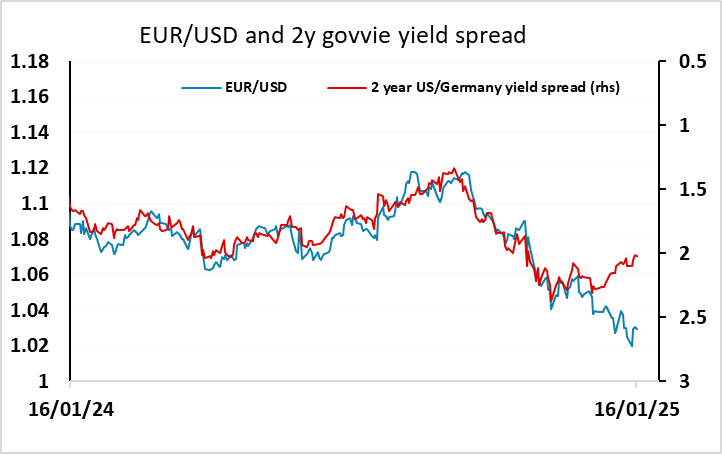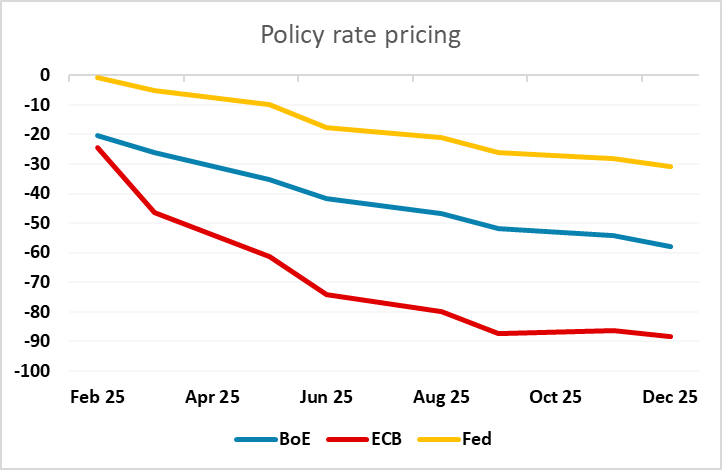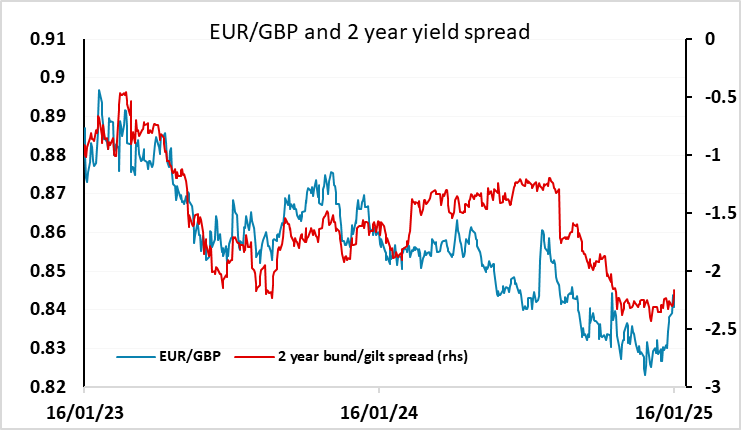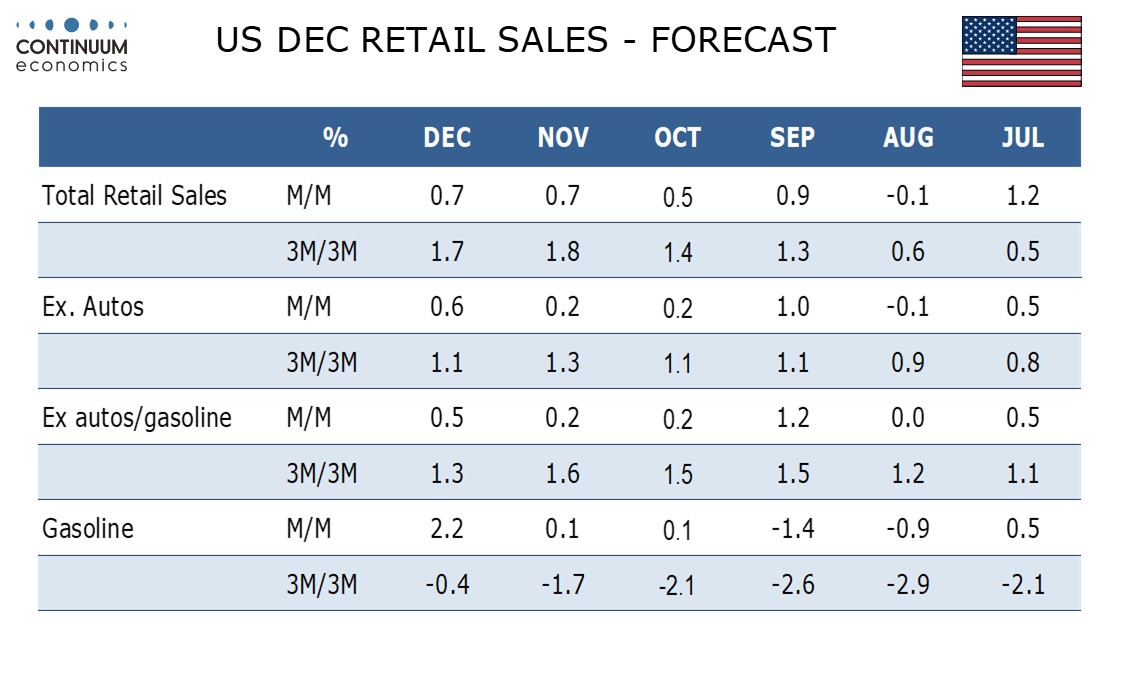FX Daily Strategy: N America, January 16th
Little impact seen from US retail sales
AUD has potential to extend gains on solid employment data
GBP is vulnerable to any further evidence of weakness in GDP
Focus shifting to Trump inauguration and any early announcements on tariffs in particular
Little impact seen from US retail sales
AUD has potential to extend gains on solid employment data
GBP is vulnerable to any further evidence of weakness in GDP
Focus shifting to Trump inauguration and any early announcements on tariffs in particular
US retail sales provides the last significant US data of the week, with the USD generally under a little pressure after marginally softer price data. We expect US retail sales to finish Q4 on a solid note with a 0.7% rise overall, matching November’s gain, with a 0.6% rise ex autos and a 0.5% increase ex autos and gasoline, the two core rates picking up after both saw modest 0.2% increases in both October and November. Our forecasts are in line with consensus, so don’t provide any major reason for USD reaction, and after the softer tone to the USD over the last couple of days, the froth should have been taken off the USD’s strength, and as expected data should allow some stabilisation. Even so, we still see scope for USD weakness bigger picture, as yield spreads still point to USD declines and there is still quite limited scope for US yields to rise further in the short term with only one rate cut priced in for 2025. USD strength against the riskier currencies may now only emerge if we see some weakness in equities.

Before the US data there was Australian employment data and monthly UK GDP data. The Australian labor market stayed strong and sees another 55.3k employment gains, with both the unemployment and participation rate ticked up by 0.1%. While most gains are in part time job, a rotation from the November report, it does not take out the strength of the report. However, the tightness in job market has not been aligned with wage growth and there has been a rise in the perceived chanc eof a rate cut at the February meeting, so AUD has edged a little lower. We still see the AUD as attractive here from a longer term perspective.

GBP has started weaker after UK November GDP came in lower than expected at 0.1% m/m, following 0.1% declines in September and October. The underlying trend in GDP now looks to be flat, with the strength seen in H1 2024 now a distant memory. The weaker data has triggered EUR/GBP gains of 10 pips to 0.8430. This is still well below yesterday’s high of 0.8463 seen in the immediate aftermath of yesterday’s CPI data, with GBP having rallied after the initial post-CPI dip. The decline in UK yields seen after the CPI data was accompanied by GBP gains, once again reversing the usual positive correlation between the currency and yields. GBP weakness in the last week has been related to negative sentiment around growth and fiscal sustainability, and lower yields are seen as positive for the government finances and consequently for growth. But weaker growth numbers that lead to lower yields are not the same as lower inflation numbers that lead to lower yields, as there is obviously not the same positive growth implication.

From here, we still see some downside risks for GBP as there is still plenty of scope for further declines in UK rate expectations. While the recent GBP weakness has been related to fiscal concerns and higher yields, in general lower yields have led to a weaker pound, and there is still potential for the market to rice in a BoE policy path much closer to the ECB than the Fed. If this were to come about, EUR/GBP would have potential to 0.85 and beyond, even if current uncertainties around growth and fiscal sustainability fade.

The focus may now shift towards Trump’s first policy initiatives after his inauguration on January 20. There are likely to be a string of executive orders from the White House in the first week of his presidency, with immigration probably the main focus, but it is possible that tariffs will also be an early announcement. Trump’s threats of a 25% tariff against Mexico and Canada suggest a transactional approach to achieving concessions on the border or enhancing a trade deal. Reports suggest some Trump supporting economists favor an across the board tariff for certain sectors, which could be more economically damaging to trade and boost inflation. We still feel that China will be the first target starting with demands for an enhanced trade deal and then an average 30% tariffs being implemented against the current 20%. China will be reluctant to quickly capitulate to the U.S., which will mean a H1 2025 trade war with China. We also feel that Germany and the EU are at high risk of tariff threats and actual tariffs in 2025. But the impact of all this on the USD is uncertain. In the first Trump presidency, the USD weakened through 2017/18 after initial strength post election, perhaps in part due to tariff policies, although a direct Trump preference for a weaker USD was also a factor. This may also be expressed this time around, with this week’s comments from Japanese officials suggesting USD/JPY could be a focus. All in all, there is potential for volatility, and the high level of the USD and the post-election gains suggest to us that the biggest USD risks are on the downside.

